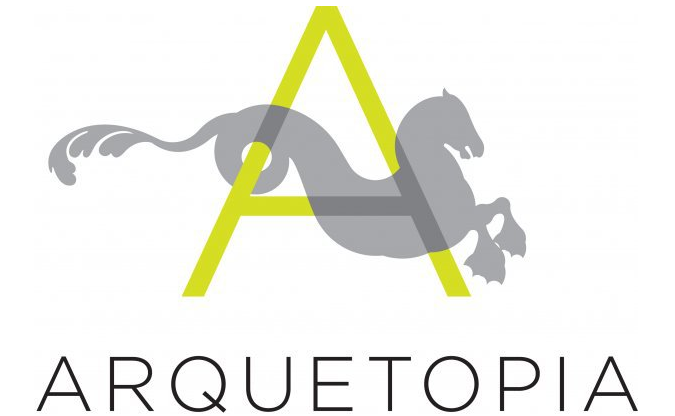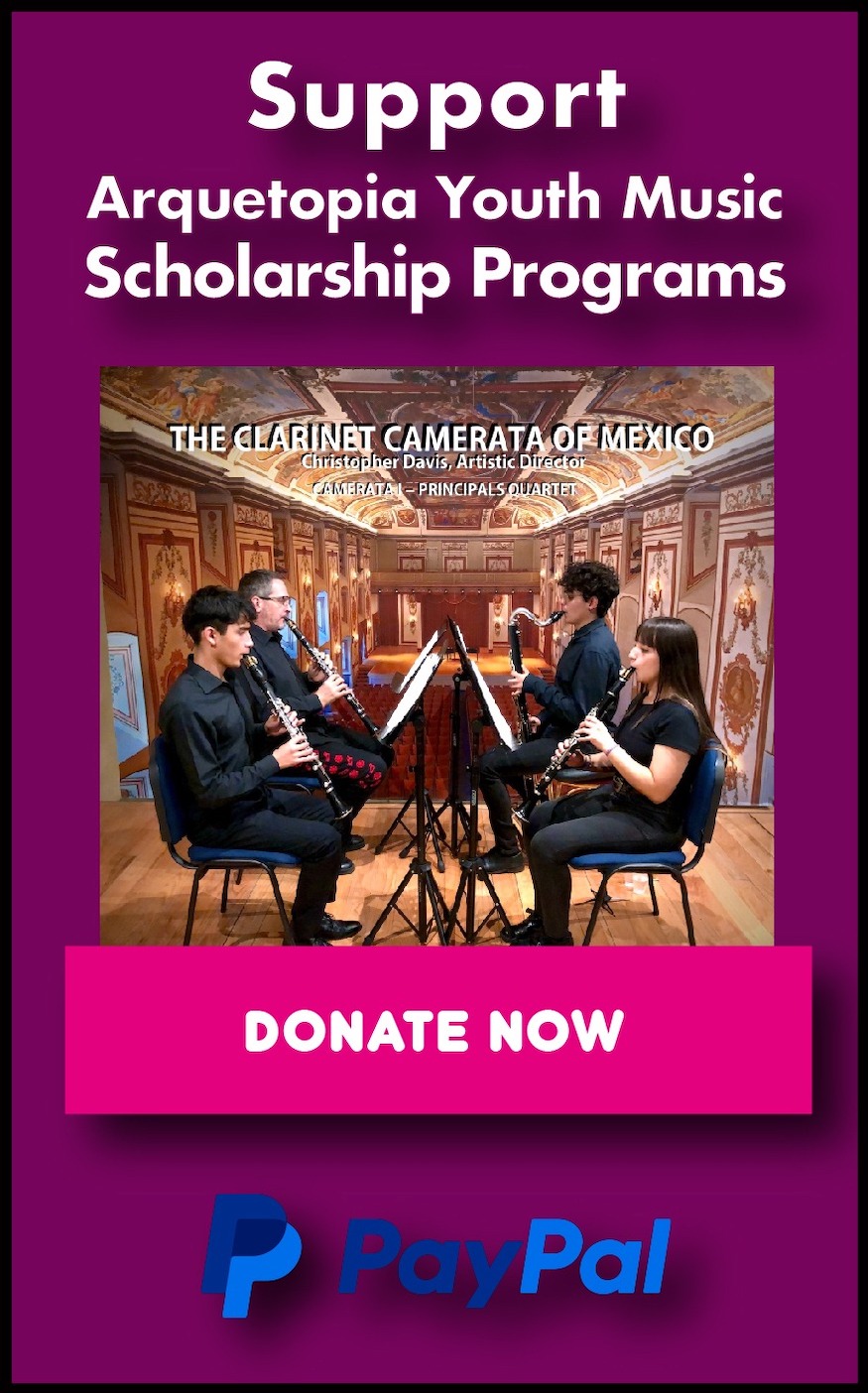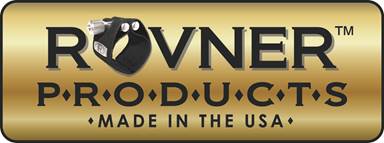The Code of Abstraction:
Peruvian Textiles Instructional Program
Andean Weaving
Arquetopia Location: Cusco, Peru

Note: The focus of the master instruction in this program is Peruvian (Andean) textiles. For residency programs with master instruction in Mexican textiles, we offer the Mexican Textiles Instructional Programs in Oaxaca, Mexico. For a program with master instruction in natural dyes techniques for textiles, we offer the Natural Pigments Instructional Program in Oaxaca, Mexico and Cusco, Peru.
This comprehensive, customized instructional residency program offers competitive professional opportunities for emerging and mid-career national and international artists, designers, and photographers aged 20 and over.
In the ancient Andean world, creation and technology were deeply intertwined, with textiles playing a particularly significant role in the development of both culture and technology. In Peru, textiles were not merely material objects; they were, and continue to be, living documents—a dynamic and ever-evolving form of visual communication. Textiles in the Andes are texts in movement, their threads and patterns conveying complex narratives that transcend time and space. These fabrics served as carriers of meaning, encoding knowledge, history, and identity within their intricate designs. The role of textiles as a medium of communication went beyond the written word, weaving together stories of power, spirituality, and community. As a complex system of communication, textiles were embedded with values that could only be understood through close observation and a deep understanding of their cultural context.
The importance of textiles in Andean society extends far beyond their use as clothing. They functioned as a technology of knowledge, integral to the development of cultural and intellectual practices. The techniques used in weaving, spinning, and dyeing not only reflected the ingenuity of the Andean people but also contributed to the advancement of material culture in Peru. Textiles were essential to the transmission of knowledge, influencing everything from social hierarchies to cosmological beliefs. Moreover, the technology of fabric production had a profound impact on the physical world, influencing the spatial organization of Andean communities. Textiles played a key role in shaping the design of Andean architecture and the construction of stone structures, linking the art of weaving with the very foundations of the culture's built environment. In this sense, textiles were not static objects but active, moving agents of culture, conveying information and meaning that were continuously in flux, reflecting the dynamic relationship between people, place, and technology.
During the Spanish colonization of the Americas, efforts to convert native populations to Catholicism set in motion complex historical dynamics that profoundly affected Andean culture. However, these processes were often characterized by contestation and negotiation of power. As a result, textile design and abstraction in Peru evolved in ways that distinguish it from many other textile traditions. While there are similarities with other cultures in the Americas, the Andean textile tradition remains unique, rich with complex cultural expressions. The backstrap loom, still used in the Andes today, dates back to pre-Inca times, and weavers continue to use technology very similar to that of their ancestors. In Peru, spinning and weaving yarn remain vital art forms, integral to the nation's heritage and the living culture of the Andes. The knowledge of weaving is traditionally passed down through person-to-person communication, with learning through observation and practice. This method directly informs the structure of our weaving programs at Arquetopia.
1. The Connectivity of Concepts
The Peruvian Textiles Instructional Program intertwines history, material culture, and artistic practice, fostering a deeper understanding of how textiles are embedded in broader social, political, and historical contexts. Through academic visits and direct engagement with the local context, participants connect the tactile experience of working with fibers, weaving, and embroidery to larger conceptual frameworks. This approach encourages an exploration of the histories of resistance, adaptation, and identity negotiation, recognizing how textiles in Peru serve as living documents that communicate complex cultural narratives.
2. The Practice of Unlearning
This program challenges participants to dismantle preconceived notions about textiles, craftsmanship, and authorship by critically examining the colonial legacies embedded in weaving and embroidery. By interrogating how textile practices have been appropriated, commodified, and redefined over time, participants engage in a process of unlearning—questioning dominant narratives and reorienting their practice toward a more conscious and nuanced relationship with fibers, techniques, and cultural heritage. This reflection allows participants to reclaim and revitalize traditional techniques through contemporary perspectives.
3. The Rhythm of Creating
In this program, rhythm becomes a space where participants question labor by weaving together research and intuition to challenge history and expand local knowledge. The hands-on exploration of fibers, weaving techniques, and embroidery traditions encourages participants to engage in a dynamic process where making, questioning, and discovering unfold in constant dialogue. This approach transforms artistic practice into a site of active inquiry, where intuition becomes a method for rethinking narratives, deepening material understanding, and forging new connections between the past and present.
4. The Ethics of Movement
Textiles have always been in motion — through trade, migration, and transformation across time. The Peruvian Textiles Instructional Program emphasizes the ethics of movement by asking participants to consider the responsibility that comes with engaging with historically rich textile knowledge. Whether through the physical act of weaving, the transmission of knowledge, or the cultural significance of patterns and techniques, participants are invited to reflect on how artistic practice can navigate difference, reciprocity, and responsibility. Additionally, the encounter with the viewer through the work becomes an ethical opportunity to engage with questions, prompting a deeper reflection on how artistic choices shape understanding, challenge narratives, and open spaces for dialogue. In this way, movement —of materials, ideas, and knowledge— remains a site of ethical engagement.
Multigenerational Andean master weavers of Cusco
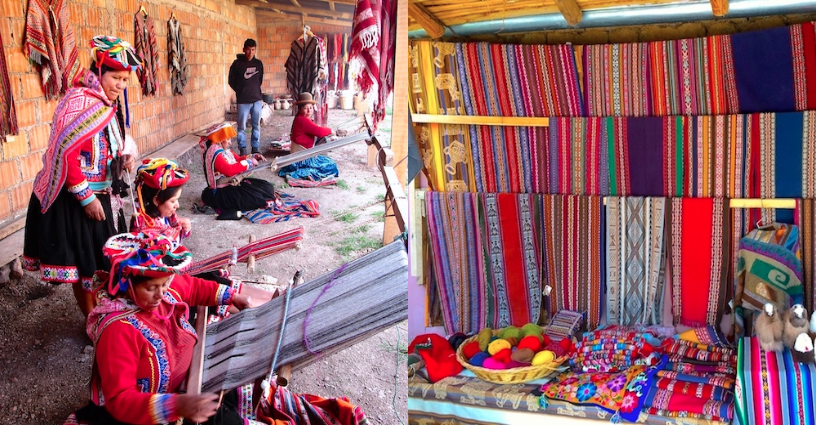
Rich array of typical textiles of Cusco
"Aymara Weaver" by Felipe Guarnan Poma de Ayala, c.1615
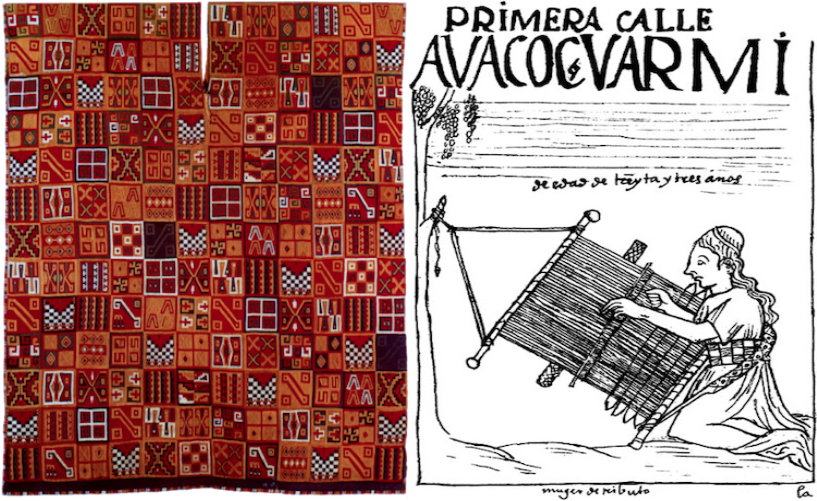
Uncu, or Inca poncho
PROGRAM DURATION / TIME PERIOD
PROGRAM DURATION / TIME PERIOD
Sessions are 3 weeks, with option to extend for 1-2 more weeks of continued production as a standard Art, Design or Photography Program. Dates are not predetermined but are proposed by the applying artist.
WHAT THIS COMPREHENSIVE INSTRUCTIONAL PROGRAM INCLUDES
WHAT THIS COMPREHENSIVE INSTRUCTIONAL PROGRAM INCLUDES
Technique Instruction:
- 27 hours master instruction, at 9 hours per week
- A weekly meeting with our directorial and curatorial staff for personalized mentoring, research assistance, project guidance, and critique
- Furnished, private bedroom
- 24-hour access to the kitchen for participants to prepare their own meals; meals/food are the participant’s responsibility
- Wireless Internet
- Use of Arquetopia’s common spaces
- Shared, serviced (single) bathrooms with modern fixtures and showers
- Housekeeping
- Arrival pickup and departure dropoff transportation provided at Cusco Airport
- Affordable, everyday public transportation is available from the program vicinity of Urubamba to the city of Cusco. Participants receive an orientation regarding the local transportation system upon arrival
- 24-hour access to shared studio with natural light
- Personal workspace with a large table
- Some tools provided
- Materials and supplies for the instructional course provided
- Materials and supplies for extended project production not included but available for purchase locally
PROGRAM TUITION INFO & APPLICATION DEADLINES
E-mail This email address is being protected from spambots. You need JavaScript enabled to view it. for tuition info and application deadlines for this program.
TO APPLY
Click here to apply for this instructional program.
Click here to apply for this instructional program.
